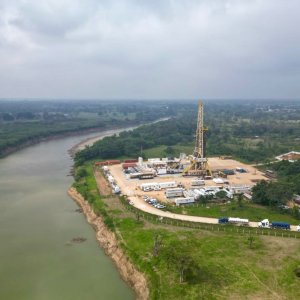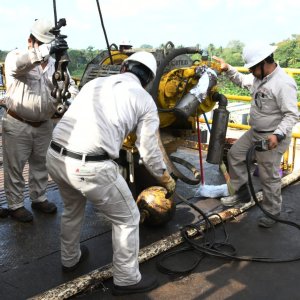
Talos, Fieldwood Share Accelerated Production Goals
 By Peter Appleby | Journalist and Industry Analyst -
Wed, 10/28/2020 - 14:23
By Peter Appleby | Journalist and Industry Analyst -
Wed, 10/28/2020 - 14:23
Watch the video of this panel discussion here.
Two major operators in Mexico’s shallow waters told Mexico Oil & Gas Summit 2020 that accelerating their developments to reach production earlier than expected would benefit Mexico, PEMEX and the companies themselves.
“It is critical to deliver production as fast as possible. Everyone benefits from production coming onstream – the Mexican state benefits, PEMEX benefits and Talos and its partners benefit,” said Loren Long, Vice President–Mexico at Talos Energy.
Long and Andres Brügmann, Country Manager of Fieldwood Energy, presented their views, as well as updates on their companies’ respective developments, in a panel moderated by Gaspar Franco, Professor at UNAM’s School of Engineering and former CNH commissioner. The operators discussed how they hoped to increase their contribution to national production as soon as possible, in accordance with their production goals.
“We believe that Area 4 has 2P reserves of 560MMboe of which 455MMb is oil. We hope that this level will be heightened with the future developments we make, including the recuperation strategies that will be put in place. Next year, we hope to produce between 39Mb/d and 59Mb/d of oil to then ramp up to 74-79Mb/d in 2022. In the medium term, we expect to hit 110-120MMb/d,” Brügmann explained.
However, there are many challenges to overcome before production can be increased on Area 4 and started on Talos’ Block 7, where the Zama reservoir was discovered. Fieldwood’s plan is to accelerate first production, including an early production stage where the company will connect with PEMEX’s Tumut-A platform, located on an abandoned field 7 miles from the Ichakil Field and 4 miles from Pokoch Field where there will be fixed platforms. The interconnection will allow the company to transport production and to separate oil, water and gas and provide certainty over the volumes being sent to PEMEX.
Talos remains involved in unitization talks with its partners and PEMEX regarding Zama, said Long. He explained that the group needed to deliver Zama’s Unitization and Unit Operating Agreement to SENER by early January and that the company is hoping that the FID will be made in the 2H21, once approvals have been granted. The company understands that this unitization – the first in Mexican history – will require patience.
“We are very happy about the support we have received from CNH, SENER and SHCP. They did a superb job with moving forward with the unitization during this difficult time,” said Long.
“With COVID-19, they had every excuse not to move so quickly but this shows the government’s need to reach production soon. The question with PEMEX is understanding how quickly it can move forward with unitization, which is a very new concept for Mexico - it is the first unitization ever and is very high profile. We must keep that in mind, because it comes with a learning curve. These are new experiences and we are being patient because we think it will ultimately be successful.”
The support of local service contractors will be essential for successful production. In response to a question from Gaspar Franco regarding how national suppliers could strengthen competition to supply services to IOCs, Brügmann said that experience and understanding requirements set by ASEA were essential, as well as having deep knowledge of local content requirement guidelines, because being a Mexican company did not guarantee strong local content provisions. Going beyond the minimum requirements set for working regulations was also important.
Both panelists agreed that oil and gas’ future was bright, regardless of the current COVID-19 problems, and that Mexico would ultimately benefit from energy developments. The earlier production could initiate the better, they agreed.
“We are staying focused on the long term. We still need to make the right decisions based on what we think will be a very robust market once we get past the COVID-19 pandemic. It is tempting to focus on today or tomorrow, but our project is one that will produce for 30 to 40 years,” said Long.
















